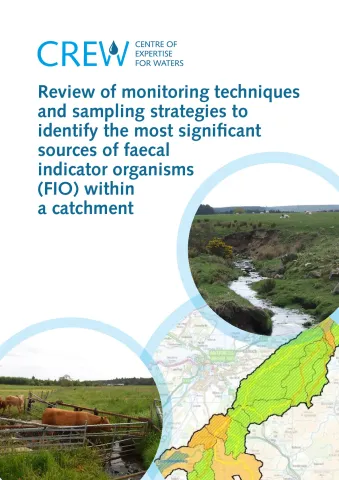Review of monitoring techniques and sampling strategies to identify the most significant sources of Faecal Indicator Organisms (FIO) within a catchment
SEPA plan to use “blitz” monitoring to get a picture of water quality across catchments where there are multiple sources of faecal pollution to Bathing Water Protected Areas (BWPA) and Shellfish Water Protected Areas (SWPA). This is envisaged to involve FIO sampling across the river network to identify the area of influence, and trace FIO hotspots and types of sources within the area of influence. However, blitz monitoring is faced with a wide range of challenges, such as monitoring resource limitations, regulatory requirements for storage time and analytical procedures, and limited understanding where the area of influence (i.e. the part of the river catchment in which diffuse and point FIO pollution sources can influence water quality in BWPA and SWPA) and FIO hotspots are located. Addressing these challenges is essential for addressing the impacts of catchment-based faecal pollution to BWPA and SWPA.
This report provides a literature review summarising best available evidence on the timing of FIO discharges, in-stream FIO variability, FIO pollution risk, FIO monitoring and detection technologies. Further, the report details the desktop approach developed by the research team to identify potential FIO hotspots and provides recommendations for a practical monitoring strategy to identify the area of influence to BWPA and SWPA, and to track FIO from different FIO hotspots and types of sources within it.
A three-phased approach was recommended based on the requirements of SEPA:
Phase 1: Identify area of influence and FIO hotspots therein: Apply a toolkit approach integrating desktop studies, field monitoring and modelling.
Phase 2: Assess in-stream FIO spatial and temporal variability: Apply membrane filtration techniques and flow cytometry in the lab or use of mobile labs (e.g. Colitag) or continuous monitoring devices (e.g. ALERT – E.coli Analyser) concurrently with measurement of turbidity, temperature and flow.
Phase 3: Elucidate/ confirm predominant types of sources (i.e. human vs animal): Apply microarray, qPCR of genetic markers or flow cytometry for MST to track predominant FIO sources at sites influenced by diffuse FIO sources or mixed land use.
| Attachment | Size |
|---|---|
| CRW2018_14 Executive Summary | 1.42 MB |
| CRW2018_14 Main Report | 1.42 MB |
| CRW2018_14 Appendices | 4.56 MB |
